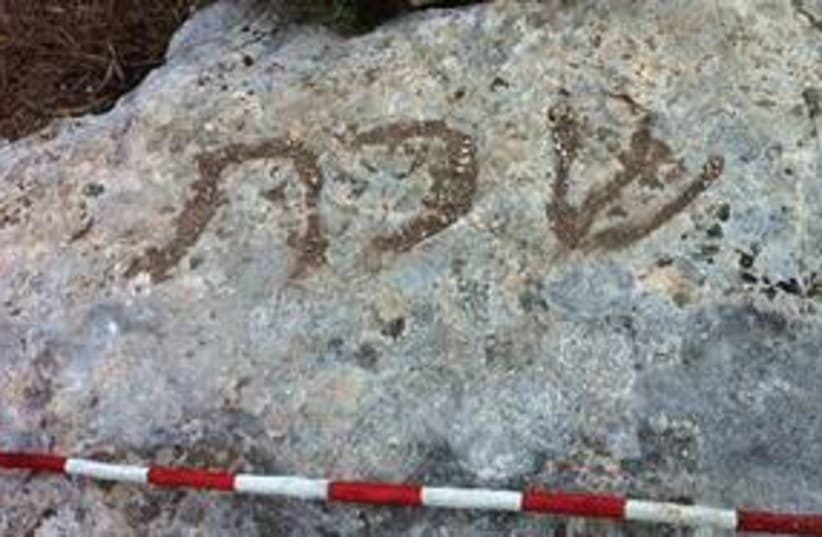Natan Ben Yehuda was staying with his grandchildren in Timrat earlier this month when he went for a stroll around the community. Stumbling upon the demarcation stone, he called Yoram Hoffman of the Internet blog "Bible Walks", who promptly uploaded photos of the remarkable find and contacted Mordechai Aviam, head of the Institute for Galilean Archeology at Kinneret College.“This is the first time we’ve found a Shabbat boundary inscription in Hebrew,” Aviam said. “The letters are so clear that there is no doubt that the word is ‘Shabbat.’”Aviam said Jews living in the area in the Roman or Byzantine era (1st-7th centuries CE) likely used the stone to denote bounds within which Jews could travel on Shabbat. The Lower Galilee of Late Antiquity and the Early Middle Ages had a Jewish majority – many of the Talmudic sages bore toponyms indicative of Galilee communities.The engraving uncovered in Timrat is the first and only Shabbat boundary marker yet discovered in Hebrew – a similar inscription was found in the vicinity of the ancient Western Galilee village of Usha, but its text was written in Greek.Aviam and his colleagues plan to enlist local help in scouring neighboring areas to locate additional inscriptions, and eventually to publish their findings in an academic journal.“This represents a beautiful, fascinating link between our modern world and antiquity, both emotional and archeological,” Aviam said. “Certainly for those of us who are religiously observant, but also for the secular among us who enjoy a stroll on Shabbat to know that we’re walking in places where Jewish history lived two thousand years ago.”
Shabbat boundary rock with Hebrew etching discovered
Inscription, discovered by chance by visitor in Lower Galilee, appears to date from the Roman or Byzantine period.

Natan Ben Yehuda was staying with his grandchildren in Timrat earlier this month when he went for a stroll around the community. Stumbling upon the demarcation stone, he called Yoram Hoffman of the Internet blog "Bible Walks", who promptly uploaded photos of the remarkable find and contacted Mordechai Aviam, head of the Institute for Galilean Archeology at Kinneret College.“This is the first time we’ve found a Shabbat boundary inscription in Hebrew,” Aviam said. “The letters are so clear that there is no doubt that the word is ‘Shabbat.’”Aviam said Jews living in the area in the Roman or Byzantine era (1st-7th centuries CE) likely used the stone to denote bounds within which Jews could travel on Shabbat. The Lower Galilee of Late Antiquity and the Early Middle Ages had a Jewish majority – many of the Talmudic sages bore toponyms indicative of Galilee communities.The engraving uncovered in Timrat is the first and only Shabbat boundary marker yet discovered in Hebrew – a similar inscription was found in the vicinity of the ancient Western Galilee village of Usha, but its text was written in Greek.Aviam and his colleagues plan to enlist local help in scouring neighboring areas to locate additional inscriptions, and eventually to publish their findings in an academic journal.“This represents a beautiful, fascinating link between our modern world and antiquity, both emotional and archeological,” Aviam said. “Certainly for those of us who are religiously observant, but also for the secular among us who enjoy a stroll on Shabbat to know that we’re walking in places where Jewish history lived two thousand years ago.”